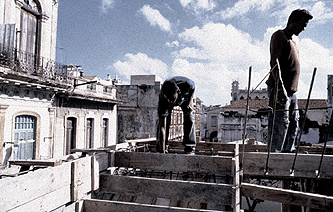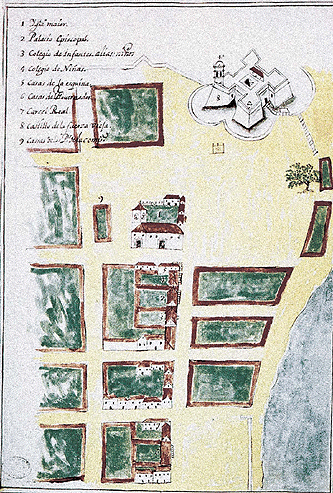The recovery of historical centres and their integrated development
Adopting the office’s methodology in other countries
Replicating the experience of the Office of the Historian will always imply, naturally, adapting it to different contexts. But there are certain core focus points and strategies that are basic and completely transferable.
It should be made clear that use of the methodology itself costs very little, as it requires only trained human resources and political will. With those factors as a base, the rest is a question of creating synergetic processes and facilitating the confluence of interests that create the positive outcomes that attract and stimulate investments.
On the other hand, applying the Office’s methodology strengthens the governability of historic centres – fragile segments of the city – given that the results acquired help assure five strategic aspects of good governance:
•local autonomy
•assurance of the continuity of the process
•fine tuning, updating and clarification of the legal corpus
•regulation of public space
•capacity to plan territorial development in an integrated fashion
In analysing different regional dynamics for reviving historic centres, we have seen that the process can run into difficulties due to various problems:
•Large number and diversity of players with local or national responsibilities in relation to the heritage
•Complex Land tenure structure
•Sparse and out-of-date legislation
•Lack of political will at the highest level and contradiction among national and local levels affiliated with opposing political parties
•Processes that depend on electoral politics
•Plans related to relatively short political periods
•Marginality and acute social conflicts
•Economic precariousness or underground economy of inhabitants
•National economic crisis
The Office has tried to confront some of these obstacles in the Historical Centre of Havana by applying the management model described above.
To adopt similar models in other contexts, one condition is indispensable: political will and decision-making at the highest level. There are reasons of both weight and convenience for the State – with highest responsibility for protecting heritage – to be concerned with and support the special management of historical centres. In the case of an historical centre which has been declared a World Cultural Heritage site, the State must assure its preservation.
In addition, protecting historical centres is a complex job that demands a great deal of resources because of the serious problems concentrated in those areas, conditions which generally delimit what may be done in them.
There is also a solid argument for classifying historical centres as special zones to be taken on: they are continually subject to the conditions of low-intensity disaster areas and are generally socially conflictive areas.
These observations imply that it would interest public administrations to support a process of sustainable rehabilitation that, through self-financing and self-management mechanisms, could even turn a situation of subsidized work into one that instead contributes through the development of a city or a nation.
Restoration work under the guidance of a leading authority in the public sector has been successful in Old Havana and is another possible formula to apply in other countries. The institution would have to be autonomous and recognized at the highest level, to which it would also be expected to report periodically on its work. In acting locally, agreements must be reached at the local level with major local players on policies, strategies and plans, who must be kept informed about the project management’s progress. This guarantees transparent and stable work in the historical centre, distanced from specific interests and the lack of awareness that exists under some circumstances.
It is absolutely necessary to have special legal status, another point to be considered. Specific judicial norms are required particularly for facilitating everything relating to land use, to legislate the possibility of expropriation or preferential purchasing, low-interest long-term credit terms, etc., in favour of the institution responsible for restoration. This guarantees it funding of its own as seed capital that can be increased through efficient use. A public entity would be owner and would administer, or subcontract administration, or rent out its assets, in order to guarantee the sustainability of the rehabilitation process, applying fiscal and land use policies specially designed for each case.
Special finance mechanisms can also be incorporated which would, in addition to the land use mechanisms mentioned above, add the possibilities offered by urban surplus values, the transfer of development resources or the establishment of a special tax system, among other procedures.
Another point to consider is the formation of an interdisciplinary team responsible for drafting an Integrated Development Plan to be drawn up together with the various players with stakes in the historic centre, that is, the various public administration offices, public/private and private institutions or companies and the resident population. The Plan, accepted by those same stakeholders, becomes the “road map” for the administrators. The planning office should serve as a space for ongoing discussion and the use of strategies that make the Plan viable. The importance of including territorial planning within the system of this “autonomous authority” is essential, as it is obviously strategic to be able to interact with the urban land and land uses: building conditions, creation of clusters, raising of urban rent, generation of positive outcomes.
TECHNICAL CONDITIONS FOR IMPLEMENTATION
In order to apply the Office’s management model, the set of players involved in saving the historic center must be identified in order to find the most appropriate spokesperson.
The next step is to choose a “lead agency” with sufficient legal authority to run the process, in charge of conciliating and reaching agreements with the heritage players responsible for the territory, and with the authority to make decisions in cases when agreements cannot be reached through the established mechanisms.
This agency should comprise four specialized elements, basically:
•Master Plan. Sets out the main guidelines of integrated development, reconciles the plans and programmes, coordinates and negotiates with the different players, conducts feasibility studies and seeks possible joint funders.
•Central Office. Acts as a bank that administers the financial, real estate, etc. resources of the lead agency.
•Cultural Heritage Office. Coordinates and carries out research and cultural programmes and publicizes through the mass media and specialized press what is happening in the historical centre.
•Managerial system. Alone or in partnerships, draws on certain productive sectors in related cultural and tourism industries, the tertiary sector, the “knowledge and information economy” and other productive activities compatible with the historic centre’s character.
DOWNLOAD THE BROCHURE PDF
albanian (0.8 MB)english (0.9 MB)
spanish (0.9 MB)
ONLY TEXT
•Adopting the office’s methodology in other countries








 COUNTRY OF ORIGIN
COUNTRY OF ORIGIN